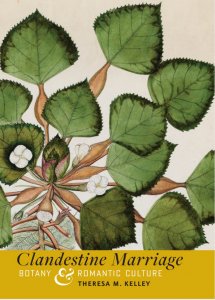Presented By: Nineteenth Century Forum
Nineteenth Century Forum (NCF) Reading Group
Theresa Kelley's Clandestine Marriage: Botany and Romantic Culture (2012)

We will discuss Chapter 3: "Clare's Commonable Plants." Kindly RSVP to Sarah Van Cleve (srvc@umich.edu) to receive the pre-circulated reading materials.
Theresa Kelley's Clandestine Marriage delves into Romantic representations of botanizing culture, exploring in particular the role botany played in larger Romantic-era debates about life and the ability to know, categorize, and depict its various forms. The chapter we will read focuses on the unsettling perspective brought by John Clare's plant poetry; often considered a poet of place and of enclosure, Clare's refusal to use Linnaean plant names is characterized by Kelley as a small act of poetic and quasi-scientific rebellion. Kelley thus links what she calls "Clare's Commonable Plants" and his resistance toward what he saw as the authoritarian Linnaean system to a retroactive resistance to the similarly authoritarian system of enclosure and the damage it wrought on rural communities.
Theresa Kelley's Clandestine Marriage delves into Romantic representations of botanizing culture, exploring in particular the role botany played in larger Romantic-era debates about life and the ability to know, categorize, and depict its various forms. The chapter we will read focuses on the unsettling perspective brought by John Clare's plant poetry; often considered a poet of place and of enclosure, Clare's refusal to use Linnaean plant names is characterized by Kelley as a small act of poetic and quasi-scientific rebellion. Kelley thus links what she calls "Clare's Commonable Plants" and his resistance toward what he saw as the authoritarian Linnaean system to a retroactive resistance to the similarly authoritarian system of enclosure and the damage it wrought on rural communities.